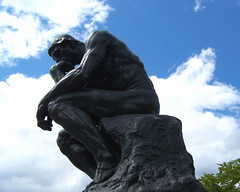 I’ve stated before that the Open Yale Game Theory course is a must watch for anyone interested in thinking more strategically about their work, more specifically I think it can help people working in change management or otherwise trying to incite people to action.
I’ve stated before that the Open Yale Game Theory course is a must watch for anyone interested in thinking more strategically about their work, more specifically I think it can help people working in change management or otherwise trying to incite people to action.
Key Concepts: backwards induction, best response and Nash equilibrium
One of the rules of game theory is to put yourself in the other player’s shoes. The reasoning that informs the rule is simple: you need to understand how players will react to each others strategies as they interact with one another. Once you understand how each of the other players react you can reason backwards from the end of the game to determine the best course of action moving forward, this process is called backwards induction.
The link to inciting action
We could think of the status quo as the current Nash equilibrium, no one seems to have a strong incentive to deviate given the responses of everyone else. Change management then is akin to setting a new Nash equilibrium. Given what I know about game theory, I think it provides a unique insight on how exactly to achieve this:
- determine the desired outcome
- put yourself in that person’s shoes
- use backwards induction
- determine what would incent others to move towards the desired outcome
- amend your own behavior in order to realign the responses of others









Good article, good resource using the Open Yale Course on Game Theory. umm… I belive the first paragraph, Charney ment to use the word “their” instead of “there.”
corrected. thanks for taking the time =)